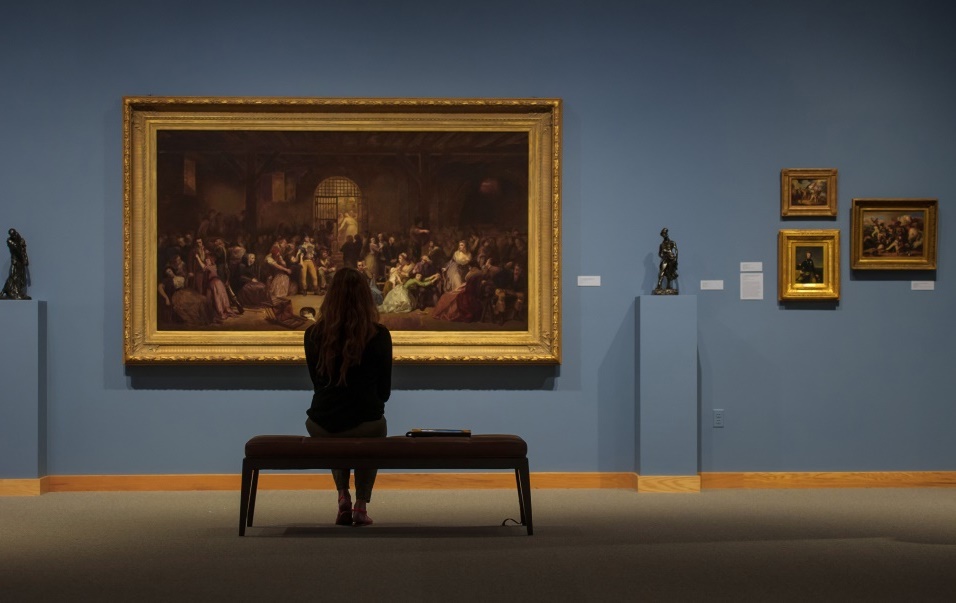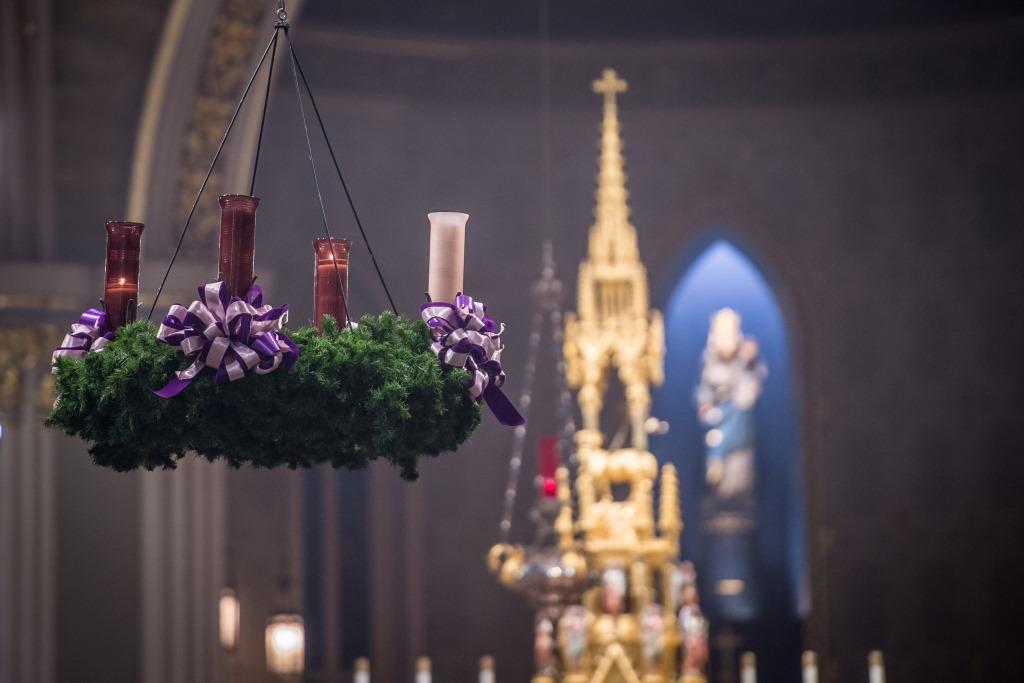Brigid Smith, Senior
Excitement was not necessarily bubbling up within me as I ventured down to the lower level of the Snite Museum to “get to know” a piece of art. With each step I took towards the Medieval Gallery, the silence got deeper and the lights became dimmer giving me a simultaneous feeling of sophisticated studiousness and an inward longing to take a nap. I set up my artist’s stool, opened my notebook, and perched myself expectantly in front of a painting titled, Madonna and Child with a Pomegranate from the Italian School of Botticelli. With wide and intent eyes I looked at the painting and said, “Now, please do tell me all about yourself.” For the next three hours, I “intensely looked” (as my professor called it) at the painting trying to become acquainted, to begin to see it, to allow the image to tell me its story and make its mark on my own.

Realizing it probably wouldn’t tell me anything unless I at least became more open and engaged, I turned my passive gaze into an active inquiry. I looked at the colors, the objects, and the basic elements of the piece. I noted the use of light, the incorporation of symbols, the postures of the subjects. I squinted painstakingly at each fold of fabric, wrinkle of skin, and strand of hair until I was sure I hadn’t missed a detail. After a considerable amount of this closed off, surface level, viewing, I began to notice what the painting was actually depicting: Mother Mary and the Christ Child. Suddenly, the particular details I had spent time taking in didn’t seem meaningless. Rather, I realized that they contributed to a story; they helped me form an image of Mary and Jesus in their ordinary life, and I began to reflect on how this might relate to or effect my own. Contrary to my initial expectations, I found myself completely engrossed in the contemplation of the Holy Family and almost excited about what I might see or think about next.
As I look forward to Advent this year, I am reminded of my “intense look” assignment and how it’s a little like Mother Mary and a mindset that can help me approach Advent more intentionally.
When Gabriel came to Mary and told her she would bear Christ in her womb, she didn’t receive all of the answers right away. I can imagine there were times throughout her pregnancy and even Jesus’s childhood when she wondered what was to come or questioned the details and simply had to wait with openness and trust to see what God would bring. She, in a sense, with her incredible Fiat, placed herself permanently at the feet of the Lord, even on the Cross, looking at Him with love and expectantly waiting to see how He would manifest His love for the world. We are told Mary observed, listened, and received all while continuing to “ponder these things in her heart”. Patiently, humbly, and with great perseverance, Mary believed that “nothing would be impossible with God” if she continued to be present and say yes.
Though I wish I could say I always responded to the Lord like Mary, more often than not I don’t. Maybe you’ve felt the way I felt in front of the Botticelli masterpiece about Advent, or Adoration, or even prayer in general. Maybe it seems like you go into a chapel and you just sit and wait and nothing seems to happen. Maybe you’ve had times when you’re down on your knees waiting and all that seems to change is the increasing awareness of how much they hurt. In this season of Advent, we are reminded with Mary that such expectant waiting and availability is not useless, it’s not for nothing but it’s preparing and shaping us for something far beyond our wildest imaginings. Though it might seem slow and at times “pointless,” the process of returning to the Lord, of sitting at His feet and looking at Him expectantly, inevitably transforms us, strengthens us, and makes us ever more ready to receive Him.

I did not leave the Snite equipped with all of the answers or in perfect knowledge of my painting, I didn’t feel like I had conquered my fear of encountering something unknown, nor did I think it was an exercise I would want to do again. But, I did leave more at peace than when I arrived. I did find the time of expectant waiting important and necessary and strangely fulfilling because it prepared me to receive and appreciate more from the painting than I ever could have at first.
I invite you this Advent to take the opportunity to, with Mary, cultivate an “intense look” mindset. Embrace the active waiting, the journey, the small steps and tasks that lead us closer to becoming who we were created to be. Take note of the details, the smallest movements of your heart – both those that bring you joy and those that might ask you to grow – and just spend time sitting with the Lord. Then, allow yourself to be changed by the intense look of love with which Christ looks at you. Ask Jesus to reveal Himself to you in this time of hopeful waiting. For Christ too is waiting. He wants to enter into our lives and help us see more clearly the way of peace, of love, of hope. If we truly begin to adopt this posture of receptivity and openness like Mary did, a posture I learned just a little bit more from my lovely homework assignment, we will not be disappointed for Christ is Emmanuel, He is always with us.